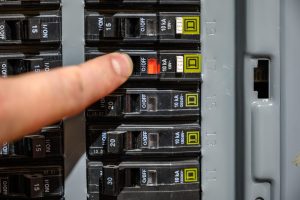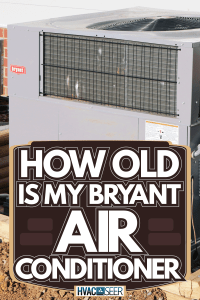Maximizing Efficiency and Safety: Roof Dryer Vent

Understanding the Purpose of a Roof Dryer Vent
Before diving into the significance of a roof dryer vent, it’s essential to understand its purpose. Using a clothes dryer generates hot, moist air that needs to be expelled from your home. A dryer vent serves as an exhaust system, directing the hot air outside and preventing it from accumulating indoors. While a standard dryer vent runs through an exterior wall, a roof dryer vent, as the name suggests, is installed on the roof, providing an efficient and safe venting solution.
Enhanced Efficiency and Performance
1. Shorter Drying Times: A roof dryer vent facilitates the smooth flow of air, allowing your dryer to operate more efficiently. With proper ventilation, the hot air can be expelled quickly, resulting in shorter drying cycles. This not only saves time but also reduces energy consumption, leading to cost savings in the long run.
2. Extended Appliance Lifespan: Efficient airflow achieved through a roof dryer vent also contributes to the longevity of your dryer. When hot, moist air is trapped inside, it can cause your dryer to work harder, leading to increased wear and tear on the appliance. By providing a clear path for air circulation, a roof dryer vent helps preserve the performance and lifespan of your dryer.
3. Reduced Risk of Malfunctions: Inadequate ventilation can cause a buildup of lint, which is highly flammable. This lint accumulation not only hampers the performance of your dryer but also poses a serious fire hazard. A roof dryer vent prevents lint from clogging the system, reducing the risk of dryer fires and costly repairs.
Ensuring Indoor Air Quality (Word Count: 380)
1. Mold and Mildew Prevention: When moist air from the dryer is not adequately vented, it can create a humid environment within your home. Excess humidity promotes the growth of mold and mildew, which can lead to various health issues. By installing a roof dryer vent, you can prevent the buildup of moisture and safeguard your indoor air quality.
2. Elimination of Allergens: Without proper ventilation, lint, dust, and other particles can accumulate in your laundry room. These allergens can circulate in the air, triggering respiratory problems and allergies. A roof dryer vent effectively removes these particles from your home, ensuring cleaner and healthier indoor air.
3. Odor Control: Unpleasant odors often accompany dampness and stagnant air. By expelling the moist air through a roof dryer vent, you can eliminate unwanted odors associated with the drying process, keeping your home smelling fresh.
Safety Considerations
1. Fire Prevention: As mentioned earlier, lint accumulation in dryer vents poses a significant fire risk. A roof dryer vent with proper maintenance and regular cleaning reduces this risk by allowing lint to escape freely, preventing dangerous blockages.
2. Carbon Monoxide Protection: In homes with gas-powered dryers, an improperly vented dryer can result in the release of carbon monoxide gas. Installing a roof dryer vent ensures the safe discharge of combustion byproducts, protecting you and your family from the hazards of carbon monoxide poisoning.
3. Structural Integrity: Moisture buildup caused by inadequate ventilation
can lead to structural damage in your home. Excess humidity can compromise the integrity of your walls, ceilings, and even the roof itself. By properly venting the moist air through a roof dryer vent, you mitigate the risk of costly repairs due to mold growth, rot, or deterioration of building materials.
Frequently Asked Questions
1. What is a roof dryer vent?
A roof dryer vent is a ventilation system installed on the roof of a house to safely exhaust hot and moist air generated by a clothes dryer. It provides an efficient and convenient way to remove dryer exhaust outside the home.
2. Why is a roof dryer vent necessary?
A roof dryer vent is necessary to ensure proper airflow, prevent lint buildup, and reduce the risk of fire hazards associated with dryer use. It also helps maintain indoor air quality by eliminating moisture, allergens, and odors from the laundry area.
3. How does a roof dryer vent work?
A roof dryer vent works by providing a direct path for hot air and moisture to escape from the dryer and be expelled outside the home. It typically consists of a vent hood on the roof, a duct that connects to the dryer, and a termination point for venting the air.
4. Can I install a roof dryer vent myself?
While it is possible to install a roof dryer vent yourself, it is recommended to hire a professional to ensure proper installation and adherence to building codes. Professional installers have the necessary expertise to prevent leaks, ensure correct vent sizing, and maintain the structural integrity of the roof.
5. How often should I clean my roof dryer vent?
It is recommended to clean your roof dryer vent at least once a year to remove lint and debris that can accumulate over time. However, if you notice reduced drying efficiency, longer drying times, or any signs of blockage, it is advisable to clean the vent more frequently.
6. How can I tell if my roof dryer vent is clogged?
Signs of a clogged roof dryer vent include longer drying cycles, excessive heat buildup in the laundry area, a musty odor, lint accumulation around the dryer, and visible debris at the vent hood on the roof. These issues indicate restricted airflow and should be addressed promptly to prevent potential hazards.
7. Can a clogged roof dryer vent cause a fire?
Yes, a clogged roof dryer vent can increase the risk of a fire. Lint buildup obstructs airflow and can become highly flammable. If the dryer cannot expel hot air properly, it can overheat and ignite the accumulated lint, leading to a potentially dangerous fire situation.
8. How much does it cost to install a roof dryer vent?
The cost of installing a roof dryer vent can vary depending on factors such as the complexity of the installation, the type of roof, and the region. On average, professional installation costs range from $200 to $500, including materials and labor.
9. Can a roof dryer vent help save energy?
Yes, a properly installed and maintained roof dryer vent can help save energy. Efficient ventilation allows the dryer to operate more effectively, reducing drying times and energy consumption. Shorter drying cycles result in lower utility bills and a more energy-efficient laundry routine.
10. Are there any alternatives to a roof dryer vent?
If installing a roof dryer vent is not feasible or preferred, there are alternative options available. These include venting the dryer through an exterior wall or utilizing a ventless dryer that recirculates and condenses the moisture. However, it is important to note that ventless dryers may require additional maintenance and may not be suitable for certain types of fabrics or larger loads.
Summary: Roof Dryer Vent
Incorporating a roof dryer vent into your home’s laundry system is crucial for maximizing efficiency, maintaining indoor air quality, and ensuring safety. From shorter drying times and reduced energy consumption to preventing fire hazards and protecting your well-being, the benefits of a roof dryer vent are undeniable. Prioritizing proper ventilation not only enhances your laundry routine but also contributes to a healthier, more comfortable living environment. Don’t overlook the importance of this small yet vital component and take the necessary steps to install or upgrade your roof dryer vent for a safer and more efficient home.





